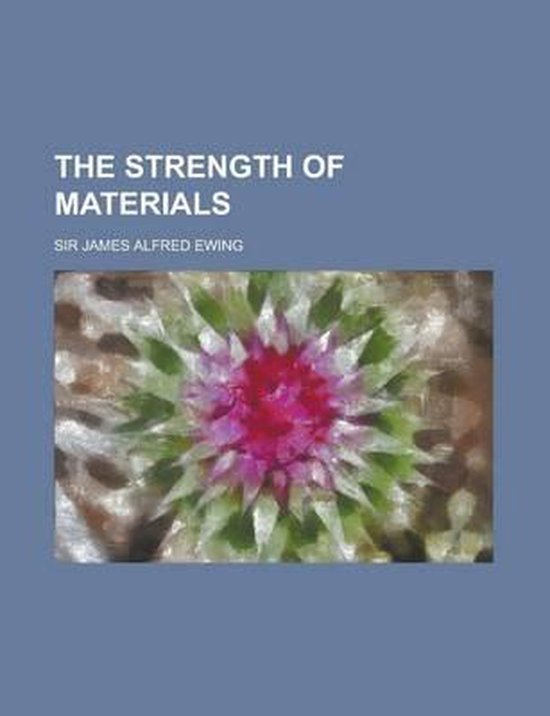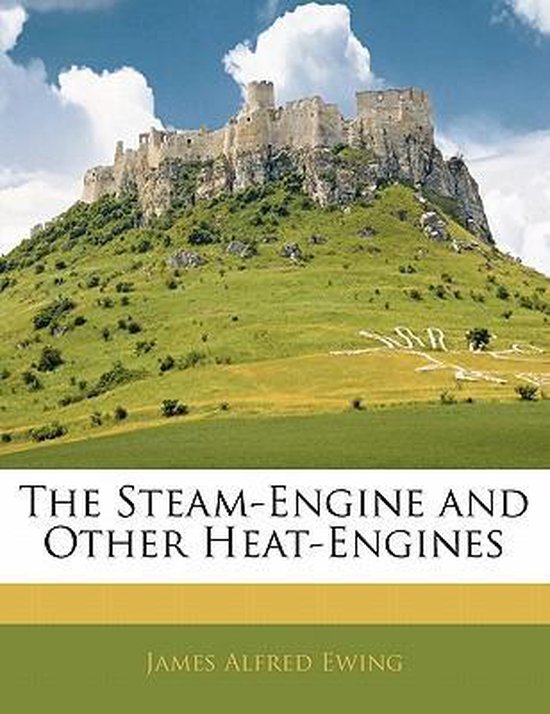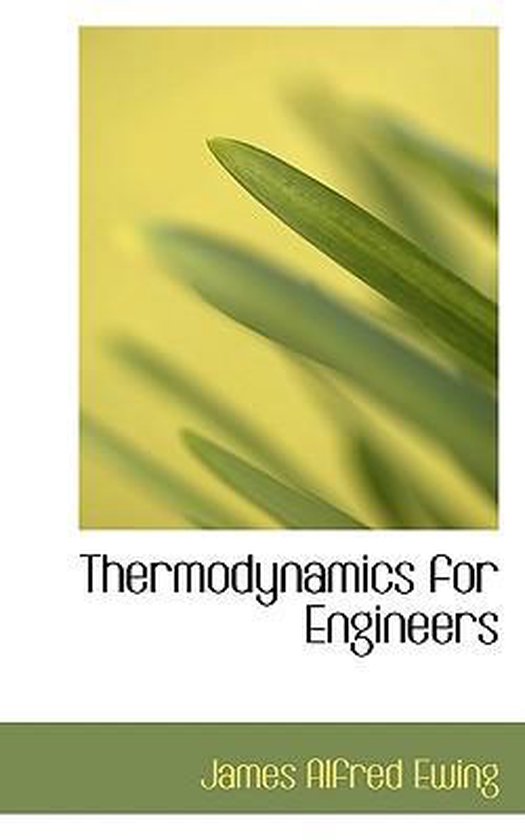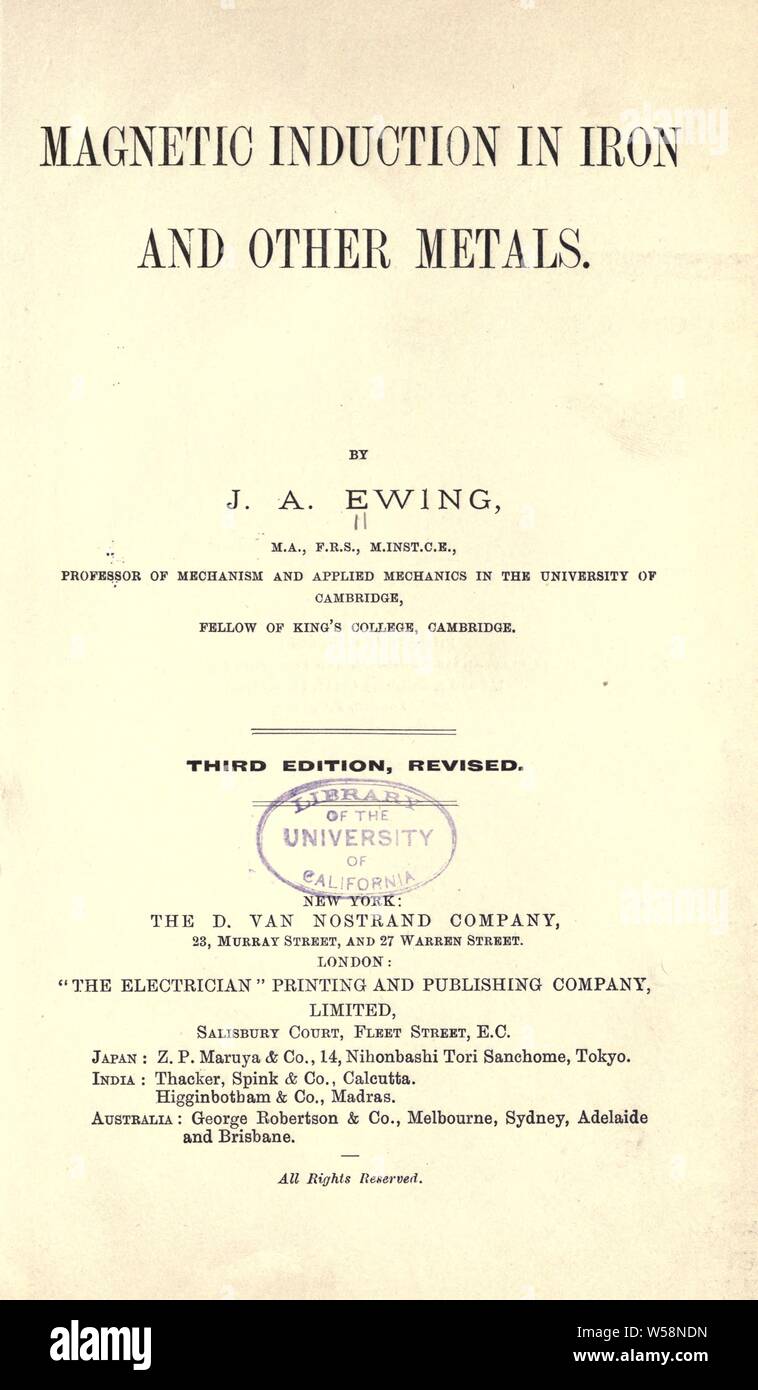
James alfred ewing fotografías e imágenes de alta resolución Alamy
JAMES ALFRED EWING 1855-1935 JAMES ALFRED EWING was born in Dundee on March 27, 1855. In his Engineer's Outlook (1933), an "olla-podrida of reminiscence and exposi-tion and reflection," he calls it, he has told in brief his life story of much interest and high achievement. His father, of sturdy farmer stock, was

The Strength of Materials, James Alfred Ewing 9781236885739 Boeken
Ewing, James Alfred. ( b. Dundee, Scotland, 27 March 1855; d. Cambridge, England, 7 January 1935) physics. Ewing's most important research dealt with magnetism. He was one of the first to observe the phenomenon of hysteresis, which he named and studied both experimentally and theoretically. He also did research in seismography and thermodynamics.

Shields, Douglas Gordon, 18881940 Art UK
Sir James Alfred Ewing (1855-1935), Principal of the University of Edinburgh from 1916, was born in Dundee, his father a minister in the Free Church of Scotland. As a child, he would frequently carry out "experiments" that led to "fearsome explosions" in his attic and the intentional administration of electric shocks.

The SteamEngine and Other HeatEngines 9781142176952 James Alfred Ewing Boeken
Sir James Alfred Ewing (yōō´Ĭng), 1855-1935, Scottish engineer and physicist. As professor at Tokyo (1878-83), Dundee (1883-90), and Cambridge (1890-1903), he helped establish programs in engineering. Ewing was director of naval education in Great Britain (1903-16) and was knighted in 1911. He was principal and vice chancellor of the Univ. of Edinburgh from 1916 to 1929.

Thermodynamics for Engineers 9781117456584 James Alfred Ewing Boeken
In 1880, Sir James Alfred Ewing, Thomas Gray, and John Milne—all British scientists working in Japan—began to study earthquakes. They founded the Seismological Society of Japan, which funded the invention of seismographs. Milne invented the horizontal pendulum seismograph in the same year. After World War II, the horizontal pendulum.

Autograph letter by James Alfred Ewing [18551935] Scottish physicist (1907) Manuscript / Paper
Sir James Alfred Ewing (1855-1935) was a Scottish engineer, physicist and cryptographer. First published in 1926, as the fourth edition of an 1894 original, this book was written by Ewing 'to present the subject of heat-engines, in their mechanical as well as their thermodynamical aspects, with sufficient fulness for the ordinary needs of University students of engineering'.

The Man of Room 40 The Life of Sir Alfred Ewing Acceptable to good hardcover (1939) First
James Alfred Ewing Medal. This is an award of the Institution of Civil Engineers in memory of James Alfred Ewing made by the Council on the joint nomination of the president and the President of the Royal Society. It is made to a person, whether a member of the Institution or not, for special meritorious contributions to the science of.

Referee's report by James Alfred Ewing, on a paper 'Microcrystalline structure of platinum' by
Sir James Alfred Ewing KCB lived from 27 March 1855 to 7 January 1935. He was an eminent physicist, engineer and academic who is remembered primarily for his work on the magnetic properties of metals. The wider picture in Scotland at the time is set out in our Historical Timeline. Ewing was born in Dundee, the son of a church minister.

NPG x80466; Sir (James) Alfred Ewing Portrait National Portrait Gallery
Of the several seismographs that he designed while teaching physics and engineering in Meiji Japan, James Alfred Ewing was particularly excited about the horizontal pendulum form, describing it as "novel" and "certainly far superior to the long pendulum seismograph in simplicity and cheapness of construction, ease of use, and accuracy of results." In 1886, after his return to Scotland.

Alfred Ewing Biography British physicist and engineer (1855−1935) Pantheon
James Alfred Ewing was born in Dundee on March 27, 1855. In his Engineer's Outlook (1933), an " olla-podrida of reminiscence and exposition and reflection," he calls it, he has told in brief his life story of much interest and high achievement. His father, of sturdy farmer stock, was minister of the Free Church of Scotland in Dundee.

Referee's report by James Alfred Ewing, on a paper 'Experimental researches on drawn steel
"James Alfred Ewing became a professor at Cambridge, and made a little known mark in World War I. As an educational advisor to the Royal Navy and with his scientific abilities, he was called upon in 1914 to set up a section in Room 40 of the Admiralty building in Whitehall for decrypting German navy wireless messages. This section was the.

Autograph letter by James Alfred Ewing [18551935] Scottish physicist (1907) Manuscript / Paper
Sir Alfred Ewing (born March 27, 1855, Dundee, Angus, Scotland—died January 7, 1935, Cambridge, Cambridgeshire, England) British physicist who discovered and named hysteresis, the resistance of magnetic materials to change in magnetic force.. Ewing was professor of mechanical engineering at the University of Tokyo (1878-83) and professor of mechanism and applied mechanics at King's.

ANNIVERSARIES SERIES Sir James Alfred Ewing IMechE Archive and Library
For the young James Alfred Ewing, that place was the family attic in Dundee. "In a family whose chief interests were clerical and literary I was a 'sport' who took his pleasure in machines and experiments. My scanty pocket-money was spent on tools and chemicals," he wrote in An Engineer's Outlook, published in 1933. These were used.

induction in iron and other metals Ewing, J. A. (James Alfred), Sir, 18551935 Stock
James Alfred Ewing. From The Dreadnought Project. Jump to: navigation, search. SIR Alfred James Ewing, K.C.B., F.R.S., M.Inst.C.E. (27 March, 1855 - 7 January, 1935) was an academic who served as Director of Naval Education in the Royal Navy from 1903 to 1916, and was one of the founders of Room 40 during the Great War.

Oil Painting Replica Sir James Alfred Ewing (18551935), 1929 by Henry John Lintott
Hall's role at Room 40 was referred to widely in the popular press of the time. He was variously described as 'Eavesdropper Ewing', 'The Cipher King' and 'The U-boat Trapper'. His son published a memoir in 1939, The Man of Room 40: The Life of Sir Alfred Ewing. Knighted in 1911, Sir James Alfred Ewing - who retired from Edinburgh University in.

James Ewing • LITFL • Medical Eponym Library
James Alfred Ewing was · born in Dundee on March 27, 1855, and received his early education at two of the schools that city-the West End Academy and the High School. Following this, he won a.